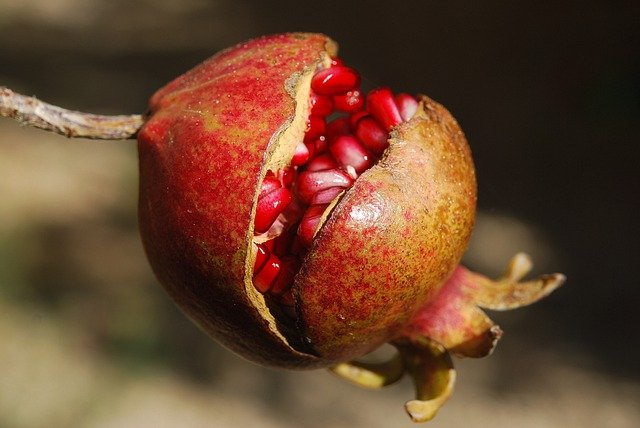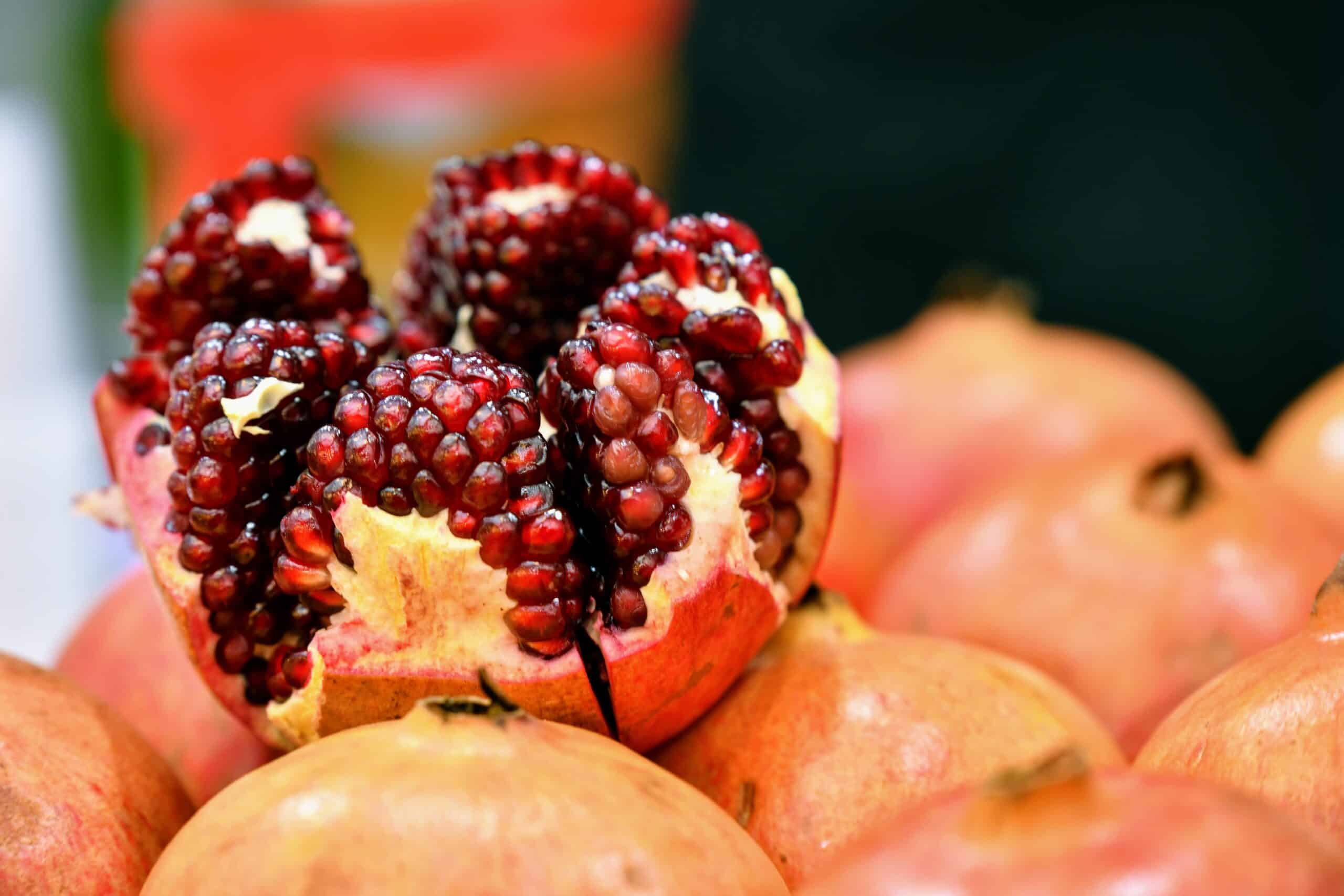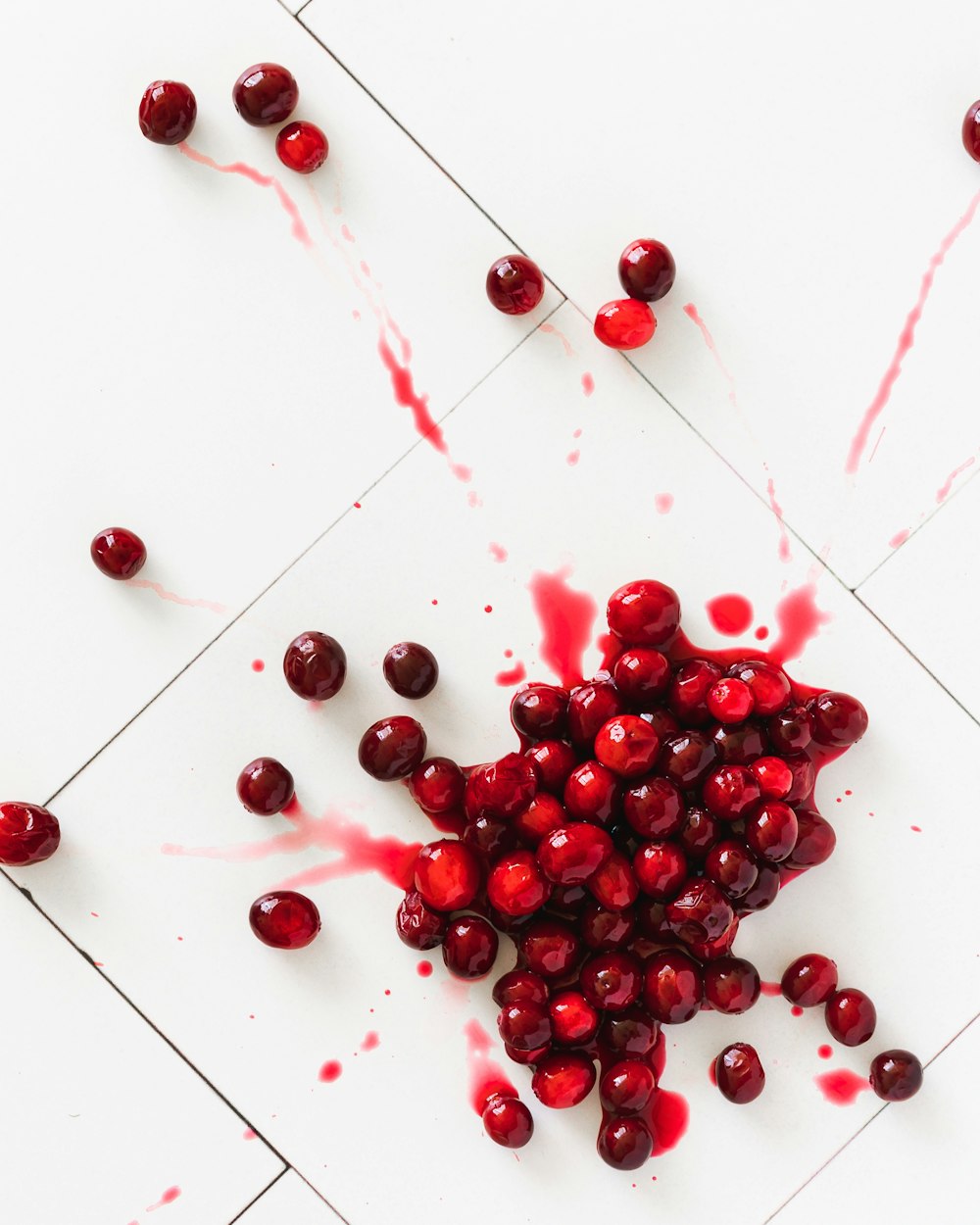Picking the Best: Tips and Tricks for Assessing the Freshness of Pomegranate Seeds
Do your pomegranate seeds smell funny?
You’ve come to the right place!
Bad pomegranate seeds can book you a trip to the hospital. So in this article, we’ll help you determine if your seeds are edible or deserve a place in the trash can.
Look out for the signs of rotten pomegranate seeds below.
How to Tell if Pomegranate Seeds are Bad
It is common to see a pomegranate with a few brown seeds among the red seeds. To tell if a pomegranate seed is bad, check out its color. Brown seeds are bad; if they appear soft and mushy, they’re bad. A pomegranate with black spores and mold is rotten.
Read till the end, and you’ll know how to identify bad seeds by smell and taste.
How to Tell if Pomegranate is Bad (Without Seeing the Seeds)
Many times when we’re in the store, or we’ve just picked up a pomegranate, we need to quickly determine if the pomegranate is bad without seeing the seeds; luckily for you, there are several key indicators to look out for. First, examine the external appearance of the fruit. A high-quality pomegranate will have a vibrant, deep red color and smooth, unblemished skin. Any signs of discoloration, such as brown or black spots, may indicate spoilage. A rotting or unpleasant odor from the fruit indicates that the pomegranate is no longer in good shape. My favorite way to tell if a pomegranate is bad is by gently pressing on its skin; if it feels mushy or soft rather than firm, it is likely past its prime.
Signs of Bad Pomegranate Seeds
- The mushy texture of seeds
- Extra soft seeds
- The brownish color of the seeds
- Black spores
- Mold
- Lighter seeds
- Unusual taste
- It smells like nail polish
You can determine if the seeds are bad using the list above. We will discuss each sign so you can easily cross them off the list.
The Mushy Texture of Seeds
It is essential to check out the texture of fresh seeds.
When you pick fresh seeds, the semi-solid structure of the seeds can be felt in the texture.
Mushy seeds that do not have a defined structure are bad.
You may notice the juice leaking from the arils (seed pods) when you pick them up, and juice should not leak from the arils until you bite into them.
However, if some seeds are mushy, but others from the same pomegranate seem perfect (having none of the signs below), you can still consume the good seeds and discard the bad ones.
Extra Soft Seeds
This indicator can be a little tricky to check.
Because some types of pomegranates do have very soft seeds.
But if some of the seeds in the same pomegranate seem weaker than others, those are bad ones.
Seeds Turned Brown Inside a Pomegranate.
When seeds go bad, they turn brown.
The white membrane inside the pomegranate that holds the seeds can also turn brown.
When you cut open a pomegranate, and if seeds in only one section have turned brown, you can still eat the fresh seeds.
It is common to see some different seeds among the many seeds in a pomegranate.
This does not mean you should throw out the whole pomegranates unless there are black and dark spores and mold.
Black/Dark Spores
It’s very easy to spot this.
Black and dark spores are signs that you should throw all the seeds in the trash and wash your hands.
Spores are a product of bacterial and fungal growth in pomegranates.
Mold
Similar to spores, mold is a fungal growth that spoils food. If you accidentally eat mold, you will get food poisoning, and… you don’t want to get food poisoning.
Spores and mold are usually found when the pomegranate has been picked from a tree and left out in the open for a long time.
The mold forms faster if the pomegranate is cut and left outside for a long time.
We have also discussed the shelf life of pomegranate seeds below if you’re worried yours has been outside for too long.
Lighter Seeds
Seeds from one pomegranate weigh about 9 ounces.
If all the seeds from a pomegranate weigh less than 6 ounces or feel light, they have gone bad.
Unusual Taste
Pomegranate arils have a mix of sweet and sour tastes.
If you taste bland-bitter pomegranates, they are most likely bad.
Pomegranate Smells Like Nail Polish
If you sniff pomegranate seeds and notice a smell similar to nail polish, they have gone rancid.
Discard these seeds and wash your hands.
It is essential to wash your hands and any plates or bowls that hold bad pomegranate seeds.
This is because bacteria and fungi can linger outside the decaying fruit.
Signs of a Bad Pomegranate Fruit
Sometimes, it is possible to tell if a pomegranate is bad just by examining the outer skin.
If there are cracks or holes, the pomegranate has gone bad or is overripe.
If the skin has dark patches and scars and is not consistently red (or yellow if you have sweet pomegranates), it is a solid sign of a damaged pomegranate.
Before discarding the entire pomegranate, you can check by cutting the pomegranate and examining the seeds.
If the seeds show any signs described above, and if there were cracks in the outer skin, discard the whole pomegranate.
Cracks are also seen on pomegranates still attached to the pomegranate tree.
You can see in the picture below:

Pests and insects can attack pomegranates that have cracked skin.
Bumps and mounds are not a sign of a bad pomegranate, and they indicate the well-ripeness of the fruit. If you’re out to buy pomegranates, buy the big ones with bumps and mounds, but not the cracked ones.
Why Do Pomegranate Seeds Go Bad
Ants and other insects are looking for the sweet juice of the pomegranate arils.
Bacteria and fungi can also quickly get their food source from pomegranate seeds left in the open.
When insects attack the seeds, they damage the structure and seep out the juice from pomegranates.
During that process, they expose the protected insides of the seeds to bacteria and fungi, allowing them to multiply.
Pomegranate seeds provide the ideal moisture and sugar source for bacterial growth and reproduction.
Shelf Life of Pomegranates and Pomegranate Seeds
Pomegranate seeds kept in the open in direct sunlight can spoil in hours.
They are good for about 12 hours if they’re kept from sunlight.
The shelf life of whole pomegranates stored away from direct sunlight is good for a few weeks.
Ensure that these whole pomegranates do not have any cracks in the skin that can spur bacterial growth.
We have discussed the best method to store pomegranates below.
Which Insects Like to Eat Pomegranates?
- Nematodes
- Ants
- Fungi
- Mealybugs
- Young and adult aphids
- Sooty Mold
- Ladybird
- Mites
- Whiteflies
- Fruit borer
The list goes on, but if you have a pest infestation in your garden or house, do not keep pomegranate seeds or the entire fruit outside.
If you have pomegranate trees, using natural insect repellants in your garden is a good idea to save the fruit.
A fruit borer can drill holes in your pomegranates!
What Happens if You Eat Bad Pomegranate Seeds
It is imperative to store pomegranate seeds safely at home.
If the seeds are unsafe to eat, they can cause multiple illnesses.
In a recent report, numerous people from eight states fell sick to hepatitis A because they ate certain brands of frozen pomegranate seeds.
A bad pomegranate seed can also cause food poisoning and bacterial infections. (Read More)
In some rare cases, pomegranates can cause intestinal blockage if one is constipated.
How to Tell if Pomegranate Juice is Bad
Fresh pomegranate juice smells fruity and tastes like ripe cherries and cranberries. If you notice a nail polish smell or an unusual taste, it indicates bad pomegranate juice.
Frozen Pomegranate Seeds: An excellent Preservation Method
One of the best preservation methods for pomegranate seeds is to freeze them in an airtight bag or airtight container.
The shelf life of frozen pomegranate seeds is around three months, and the airtight bag should be consistently frozen until consumption.
You can also store whole pomegranates in the fridge, which may take up too much space.
Pomegranates that have not been cut can also be stored in a cool place.
De-seeding and freezing seeds is the most efficient way to store and preserve them. When you wish to consume them, avoid de-freezing them with warm water.
Warm water can deteriorate the taste of frozen pomegranates, and washing them in clean, lukewarm ensures they stay fresh.
Conclusion
In summary, you want to make sure to follow the 8 points I listed below to spot bad pomegranate seeds:
- The mushy texture of seeds
- Extra soft seeds
- The brownish color of the seeds
- Black spores
- Mold
- Lighter seeds
- Unusual taste
- It smells like nail polish
Other Relevant Pomegranate Seed Posts
Throughout Morning Gardens, we have a benchmark for providing great research about the superfoods listed on the website.
For more relevant articles about pomegranate seeds, check out some of the articles in this list.
- How Many Cups of Seeds In A Pomegranate: You need to know how many seeds you’ll be getting per pomegranate to prep for your meals!
- How To Grow A Pomegranate From Seeds: Did your pomegranate seeds go bad? it’s okay, you can start over with this guide.
- How Long Does It Take For a Pomegranate Tree To Bear Fruit: Wondering how much longer until you can start enjoying the health benefits of your new pomegranate tree?
- Is It OK To Eat White Pomegranate Seeds: You know your pomegranate seeds are good, but they have a pinkish and white color. Are they OK to eat?
- What are the benefits of Pomegranate Seeds: You need to know the benefits of pomegranate seeds before you can commit to taking them!

For years now, Moringa has been a daily consumption in my life, incorporated in various forms such as capsules, food recipes, and soothing teas. Initially, my daughter and I embarked on this journey as an experiment, but as time went on, I delved deeper into its remarkable potential and unearthed the unlimited benefits it offers for our well-being and health. I got motivated by how much it positively impacted me and decided to share my insights about Moringa’s profound impact on health and overall living through my blog posts.



